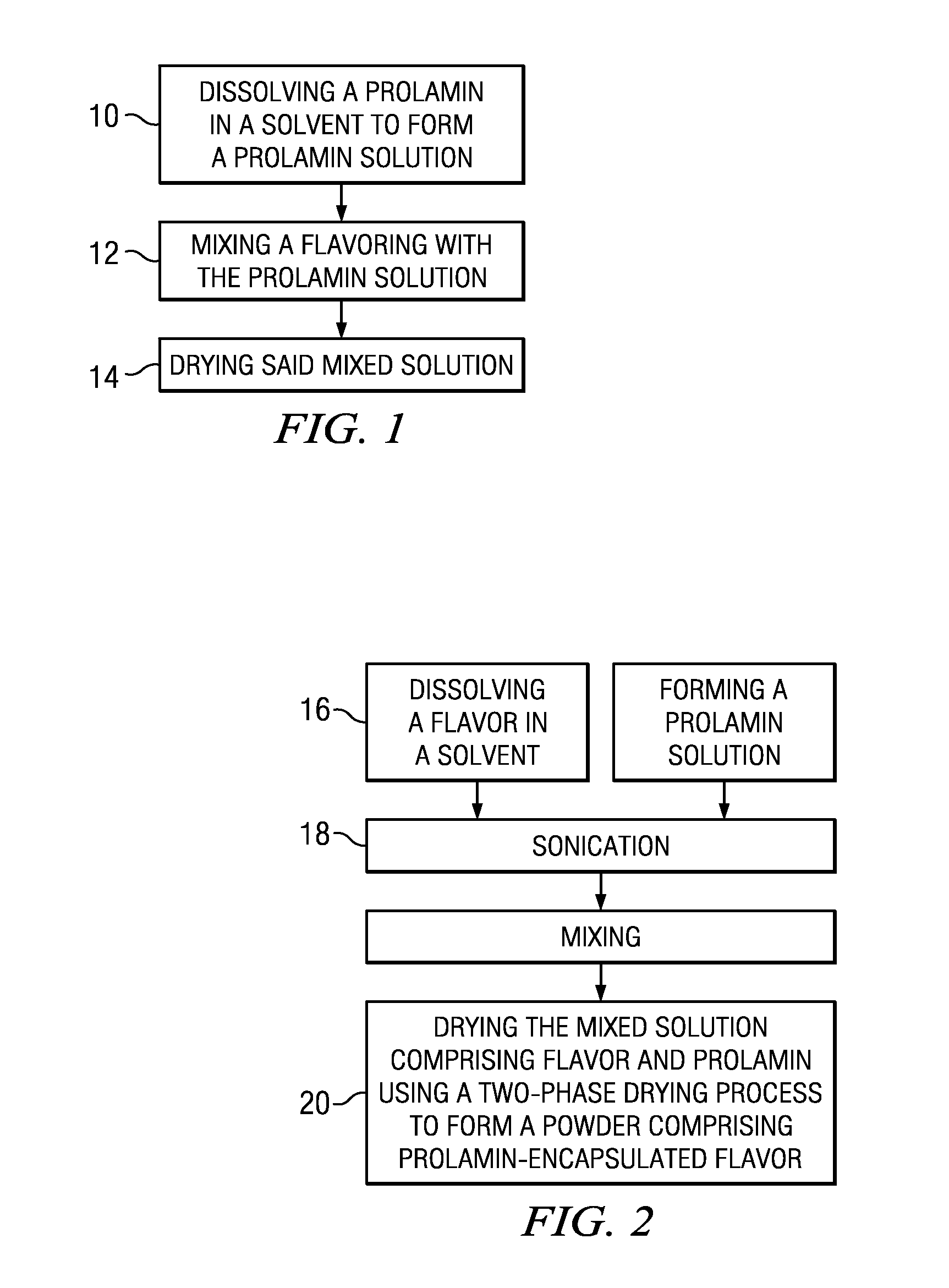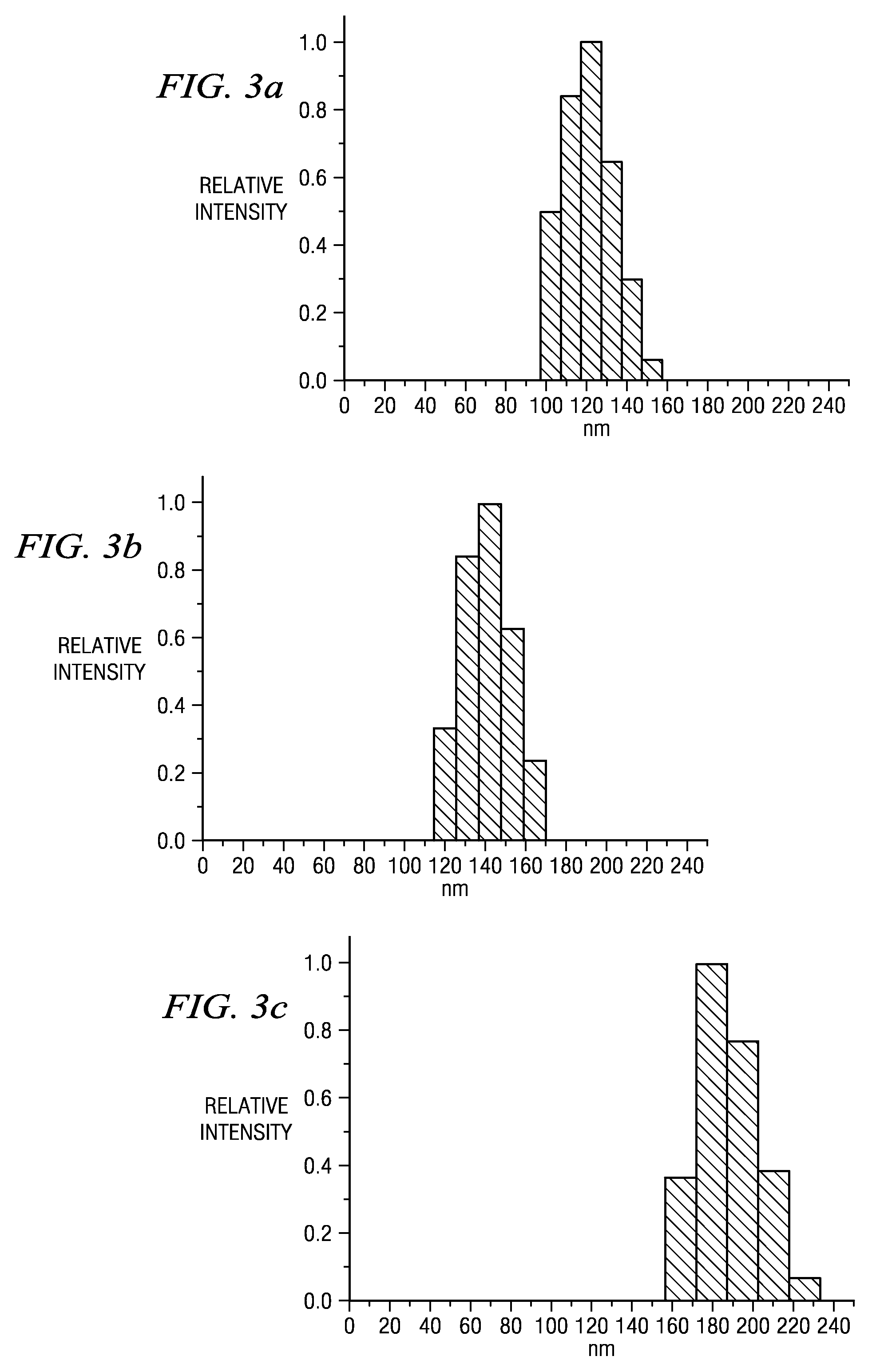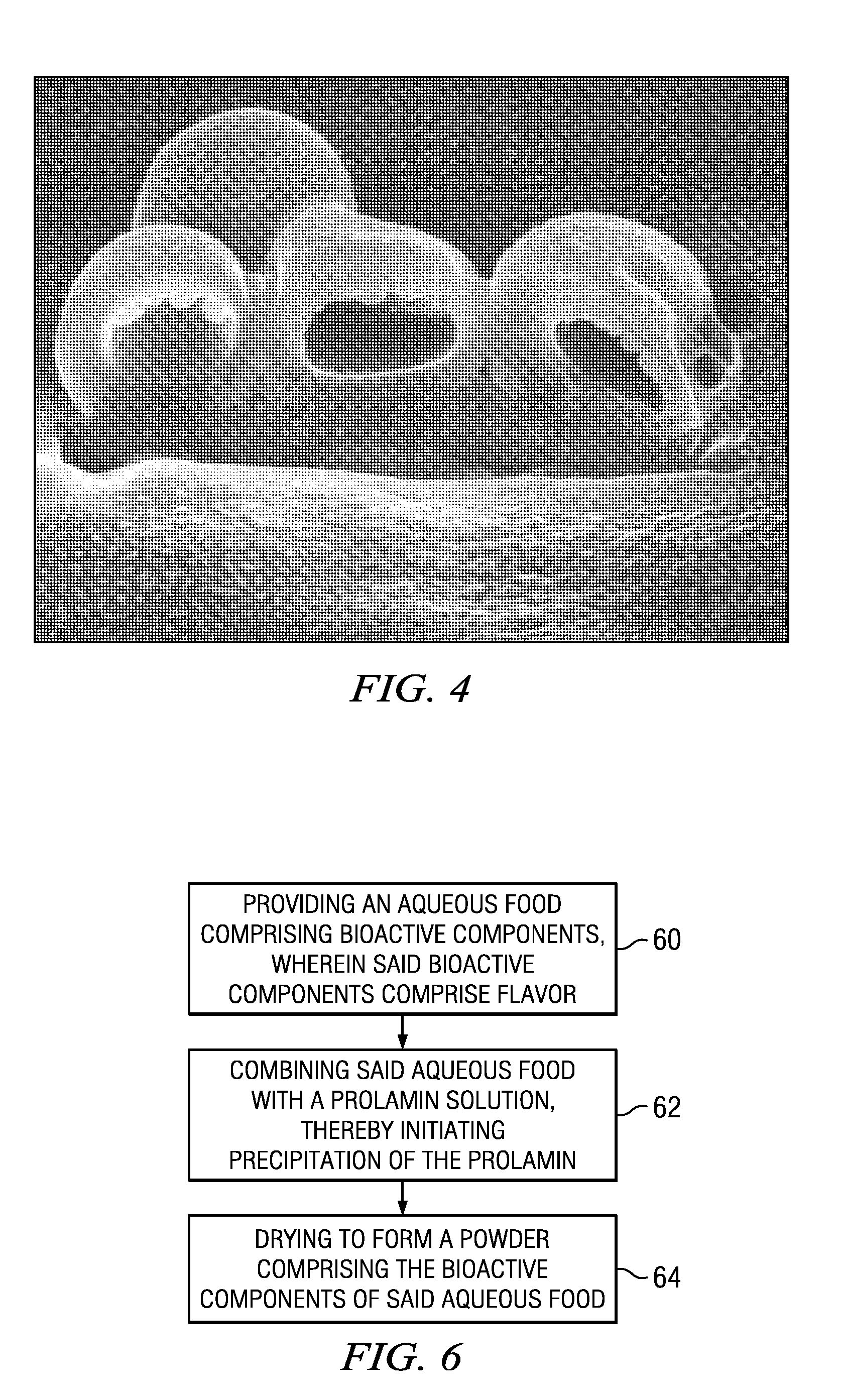Methods of Flavor Encapsulation and Matrix-Assisted Concentration of Aqueous Foods and Products Produced Therefrom
a technology which is applied in the field of flavor encapsulation and matrix-assisted concentration of aqueous foods and products produced therefrom, can solve the problems of complex systems associated with flavors that are often difficult and expensive to control, lose their desired attributes and develop off-flavors, and heat-sensitive materials such as the volatile components of flavorings are often lost or degraded, so as to reduce or eliminate the
- Summary
- Abstract
- Description
- Claims
- Application Information
AI Technical Summary
Benefits of technology
Problems solved by technology
Method used
Image
Examples
Embodiment Construction
[0028]Flavoring foods involves complicated processing. In particular, natural flavors are often derived from more-expensive, and sometimes less-available, raw materials and processes. Protecting the delicate and trace components of flavors is often difficult, as volatiles can degrade or evaporate upon contact with heat or even room temperatures. Encapsulation is important to the preservation and authenticity of heat-sensitive materials. A limited number of encapsulating methods exist but a wide range of different materials can be used, including proteins, carbohydrates, lipids, gums and cellulose. The choice of encapsulation materials depends upon a number of factors including: expected product objectives and requirements; nature of the core material; the process of encapsulation; and economics. In the present invention, a method for encapsulation of flavors with a prolamin provides a natural alternative for consumers, having little to no artificial or modified ingredients. Prolamin...
PUM
 Login to View More
Login to View More Abstract
Description
Claims
Application Information
 Login to View More
Login to View More - R&D
- Intellectual Property
- Life Sciences
- Materials
- Tech Scout
- Unparalleled Data Quality
- Higher Quality Content
- 60% Fewer Hallucinations
Browse by: Latest US Patents, China's latest patents, Technical Efficacy Thesaurus, Application Domain, Technology Topic, Popular Technical Reports.
© 2025 PatSnap. All rights reserved.Legal|Privacy policy|Modern Slavery Act Transparency Statement|Sitemap|About US| Contact US: help@patsnap.com



